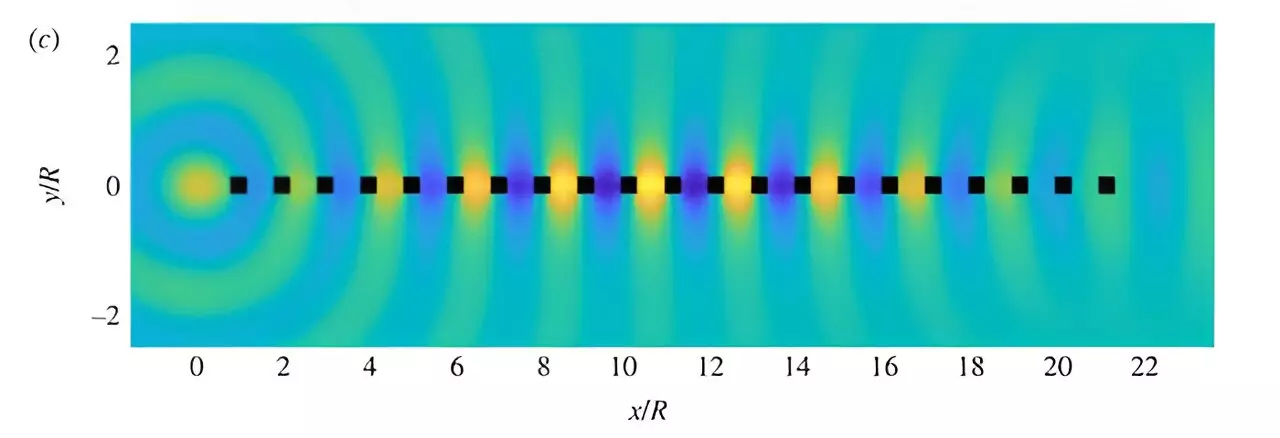In recent years, the field of metamaterials has gained significant attention due to their potential to manipulate waves in unprecedented ways. These artificially engineered materials possess properties not typically found in nature, enabling them to control waves—whether they are sound, light, or water—through their size, shape, and arrangement at a nanoscale level. With innovative applications emerging in diverse fields, including optics, telecommunications, and acoustics, the efficiency in designing and simulating these materials is paramount. A substantial advancement in this area has been made by a team of researchers from Macquarie University who have developed a new software tool, TMATSOLVER, that significantly enhances the modeling of wave scattering by complex particle configurations.
The newly developed TMATSOLVER package represents a major leap forward in computational modeling capabilities. Traditional models faced limitations, particularly when attempting to compute the scattering of waves by particles that are larger than the influx wavelength or possess intricate geometries. Dr. Stuart Hawkins, the lead author of the research published in the *Proceedings of the Royal Society A*, explains that TMATSOLVER employs a transition matrix (T-matrix) approach—an established methodology since the 1960s. However, the breakthrough lies in its ability to compute the T-matrix for a wide range of particle sizes and shapes with remarkable precision.
Dr. Hawkins emphasizes that the software allows users to simulate particle arrangements involving hundreds of scatterers efficiently. This capability is critical in metamaterial design, where understanding the interaction between waves and arrays of particles directly influences the material’s effectiveness in applications such as superlenses and invisibility cloaks.
This phenomenal achievement was not accomplished in isolation; it stems from collaborative efforts among mathematicians from several prestigious institutions, including the University of Adelaide, the University of Manchester, and the University of Augsburg, among others. Such interdisciplinary collaboration enhances the depth of knowledge and expertise harnessed to refine TMATSOLVER’s capabilities. Dr. Luke Bennetts, a co-author from the University of Adelaide, highlighted the software’s ability to alleviate previous bottlenecks in numerical computation, allowing more complex and diverse metamaterial theories to be tested readily.
This collective endeavor demonstrates the value of pooling expertise to overcome obstacles in advanced materials research. With TMATSOLVER, researchers can explore countless configurations without the limitations imposed by older computational approaches, thus accelerating the pace of metamaterial innovation.
Following its development, TMATSOLVER has been put to the test through various case studies that illustrate its applicability in metamaterial design. Problems tackled include the design of high-contrast square particles and tunable periodic structures capable of manipulating wave propagation in novel ways. The implications of these studies extend beyond mere theoretical exploration; they pave the way for practical applications in multiple sectors.
Metamaterials enabled by TMATSOLVER can facilitate advancements in telecommunications, noise reduction technologies, and energy harvesting systems, demonstrating their broad-reaching impact. As Professor Lucy Marshall, Executive Dean of the Faculty of Science and Engineering at Macquarie University, articulates, the software can significantly accelerate breakthroughs within the material science realm and foster the development of new technologies that redefine wave interactions.
The advent of TMATSOLVER marks a transformative moment in the evolution of metamaterial research. Its capacity to accurately model complex wave-particle interactions empowers scientists and engineers to bring creative ideas to fruition more rapidly than ever before. The collaborative spirit and dedication of the researchers involved reflect a strong commitment to advancing knowledge in materials science, demonstrating that innovative computational methods can catalyze significant progress.
As the field continues to evolve, the potential of TMATSOLVER to facilitate discoveries in the design of metamaterials offers exciting prospects for future applications and innovations, promising a dynamic trajectory for research and technological advancement in the years to come.


Leave a Reply